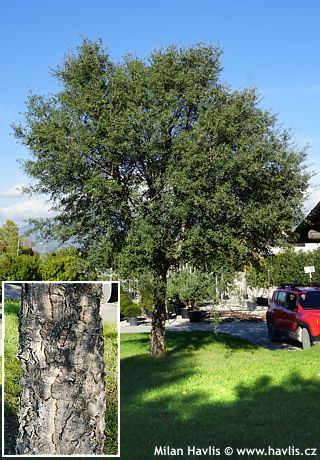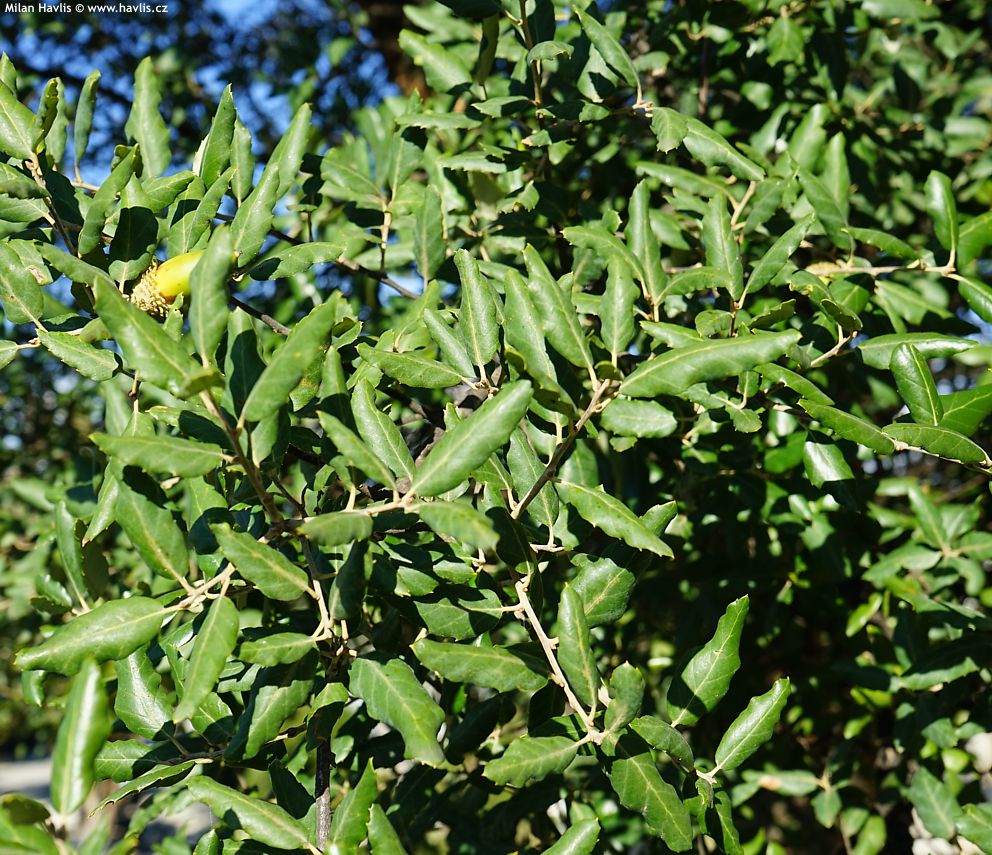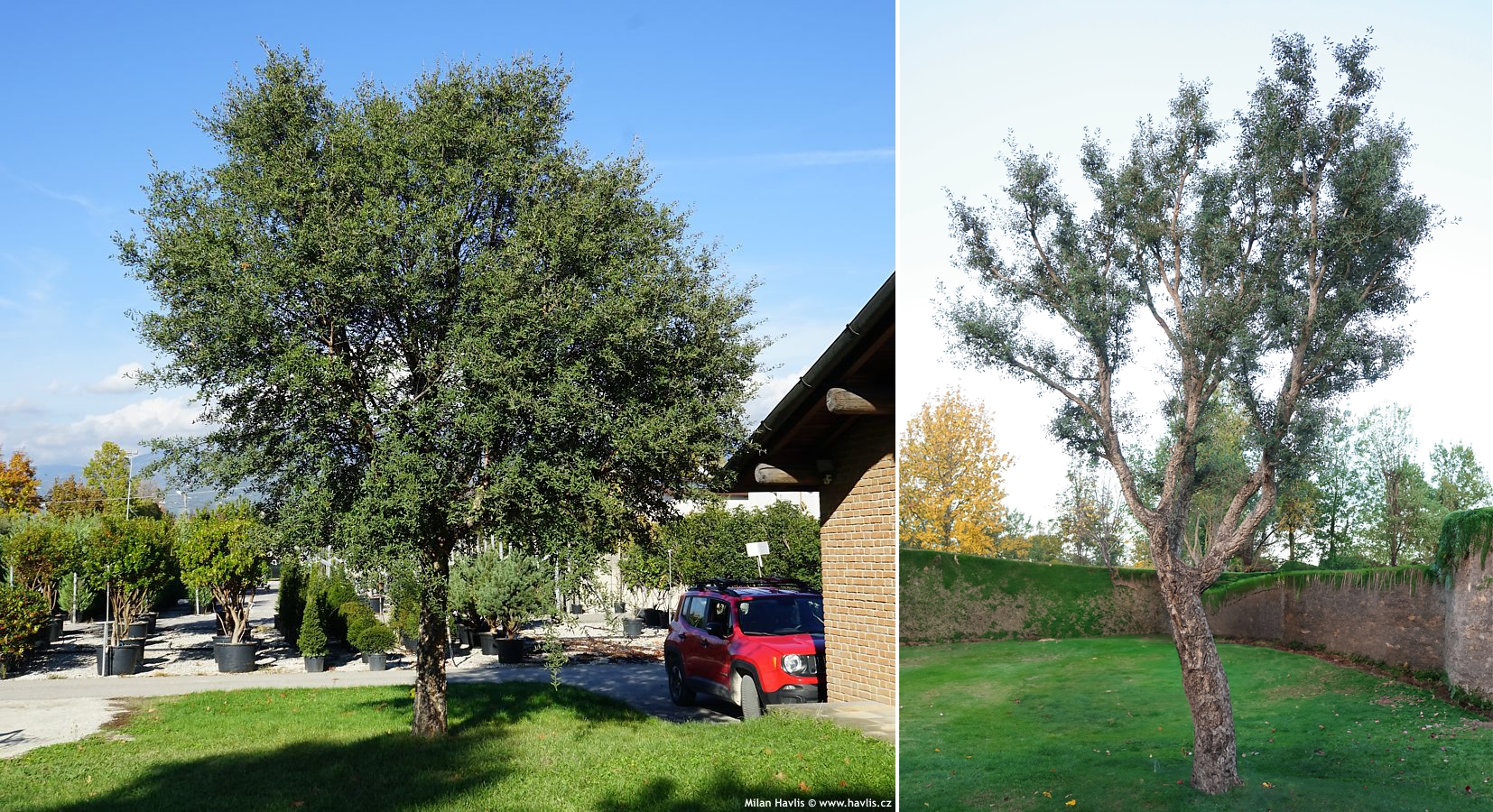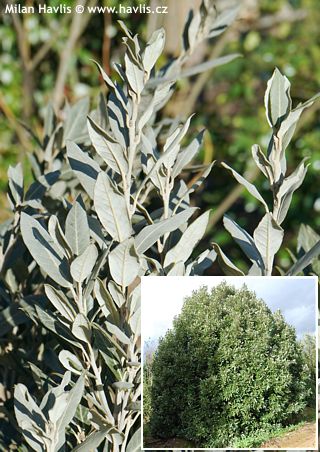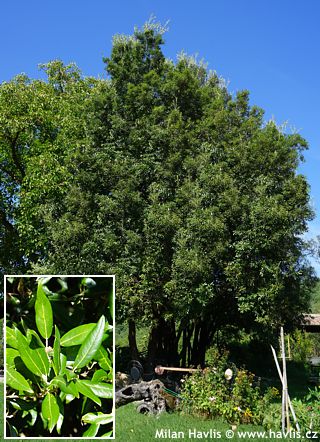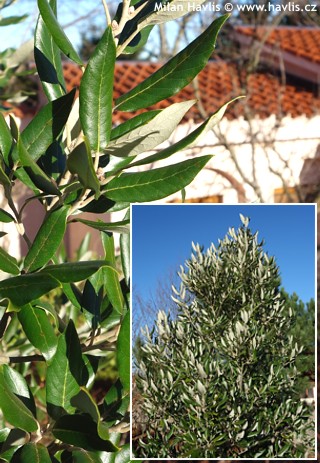Quercus suber cork oak


The cork oak is a medium-fast growing evergreen tree with leathery leaves. They are narrowly oval, bright silvery grey as they emerge and medium green and glossy when mature. The reverse retains a silvery gray indumentum. Older plants produce small, elongated acorns.
It has a highly attractive, deeply fissured, grey-brown, soft bark which forms cork. That is harvested every 10 years or so from trees that have reached 30-40 years of age. The tree itself is not damaged though – the cork keeps on growing after every harvest but don’t do it in ornamental garden, it is not a pretty sight. Mature size of trees cultivated in CE climate is about 10 m in both height and width, while in its natural habitat it can reach twice as much.
The canopy is picturesquely uneven, somewhat rounded, but each tree is unique in shape. The branching is dense enough to make a good-looking tree, but young trees are often pruned in spring to achieve a bushier canopy sooner. With its airy habit, fissured trunk, and similar foliage it strongly resembles olive trees, which is why in colder climates it is often planted as their hardier alternative from an aesthetic point of view because you simply cannot force an oak to produce olives however rare or beautiful it is.
Cork oak is not too picky about soil type provided it is well drained. It can even take less fertile soil. Never plant it in heavy clay and water-logged sites where its roots may rot. Even moisture is needed in the first season after transplanting, then it will do with occasional rain. It loves sun and warmth, never plant it in exposed areas of zone 7. For cultivation in Central European conditions always look for plants with hardened wood which is not prone to frost damage. Pruning is best done in early spring and light trimming is possible in midsummer. Hardiness trialed and proved down to -18 °C (USDA zone 7).
Last update 15-01-2023
Goods are shipped all over Europe. For Russia and U.K. and for further details please read about SHIPPING OPTIONS HERE.
Are you interested in a serious discount for orders NOV-FEB? Check your options here.
THE PRICES INCLUDE VAT of 15%. For quick conversion you can use 1 CZK = approx. 0.04 EUR
- STANDARD QUALITY - Plants of this group are 1st class quality with number of branches and overall density adequate to their size and age, considering they were container grown.
- DE LUXE QUALITY - This label guarantees a luxurious quality of manually selected plants that, compared to their height and age, are exceptionally dense and beautiful.
- EXTRA - These plants are usually mature and bigger specimens with exceptional overall appearance.
- STANDARD (as described in the plant form) means a tree with a trunk of 190-210 cm and a crown at the top, unless specified differently. The commercial size for trees is their girth measured in the height of 1m from ground.
- HOBBY - These plants are of the same quality as our standard-quality plants but younger and therefore cheaper.
- SHRUB - a woody plant with branches growing bushy from the ground level.
- HALF-STANDARD or MINI-STANDARD - a small tree with shorter trunk, its size is usually specified.
- FEATHERED - These are trees with branches growing already from the base of the trunk and up along the stem.
- GRASSES and PERENNIALS - Sizes given usually read the diameter of the pot or the clump, as specified.












